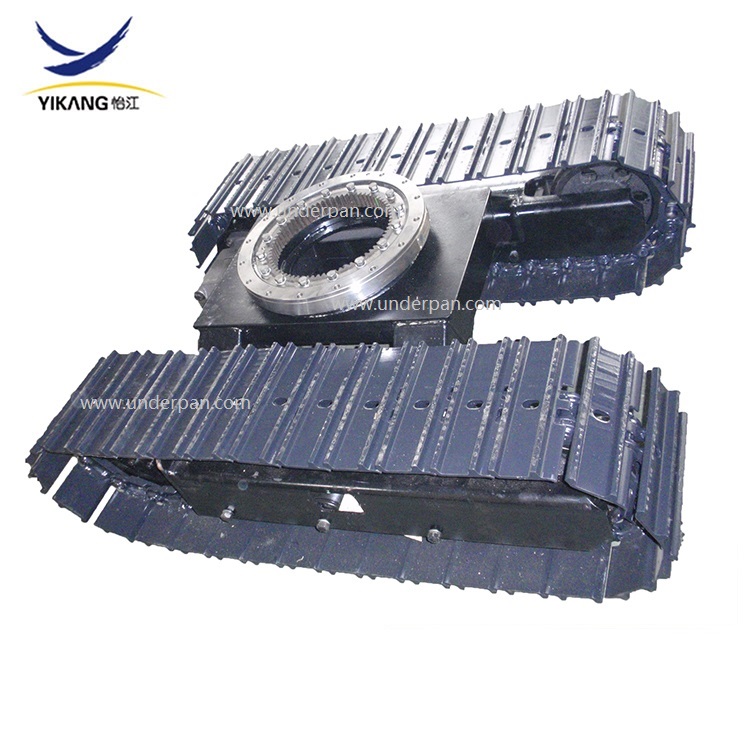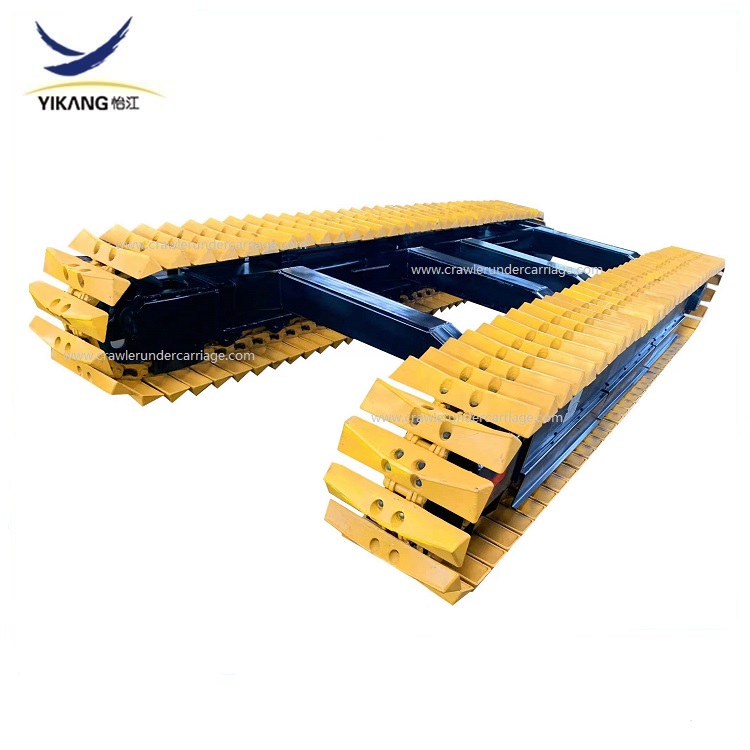With the increasing demand for the research and utilization of social resources by humans, more and more work needs to be carried out underwater for exploration, research and resource extraction. Therefore, the demand for specialized machinery has never been more urgent. The mechanical crawler undercarriage suitable for underwater operations brings great convenience to underwater work. The design requirements for these crawler undercarriage are definitely higher than those for ordinary crawler undercarriage. They must address the unique challenges brought by the underwater environment, including high pressure, corrosive salt water, and the need for reliable functionality under extreme conditions. Let's discuss the basic design requirements for mechanical undercarriage suitable for underwater operations:
The underwater environment poses significant challenges to chassis design.
The complexity of the underwater working environment places higher demands on undercarriage design. The most important requirements include:
1. Pressure resistance: As the depth increases, so does the water pressure. The design of the mechanical undercarriage must be capable of withstanding the tremendous force exerted by water at different depths, which may exceed several hundred atmospheres.
2. Corrosion resistance: Salt water is highly corrosive. The materials used for the underwater undercarriage must be corrosion-resistant to ensure its lifespan and reliability. This requires the use of specialized coatings or materials to withstand long-term exposure to harsh marine environments.
3. Temperature variations: The underwater temperature can vary greatly, affecting the performance of materials and components. The design of the undercarriage must be capable of operating effectively across a range of temperatures, from the cold depths of the ocean to the warm surface.
4. Sealing and Protection: Ingress of water can lead to catastrophic failure of mechanical systems. Therefore, an effective sealing solution is crucial for protecting sensitive components from water damage.
Custom design and production
One of the most crucial aspects in developing mechanical undercarriage for underwater operations is the need for customized design and production based on specific requirements. Off-the-shelf design solutions often fail to meet the specific demands of unique underwater applications. Customization not only involves meeting basic needs but also ensuring the existence of reliable operational functions under extreme conditions. Tailored integrated functions based on the actual environment include:
1. Dimensions and shape: The undercarriage must be designed to fit the specific dimensions and weight-bearing requirements of the equipment it will house. This may involve creating a compact design to minimize resistance while maximizing the internal space for components.
2. Modular Design: The modular approach enables easy upgrades and maintenance of the undercarriage. By designing the undercarriage with interchangeable parts, operators can quickly adapt to changing demands or replace damaged components without having to completely redesign.
3. Technology Integration: As underwater operations increasingly rely on advanced technologies, the undercarriage must accommodate various sensors, cameras, and communication devices. Customized design can ensure that these technologies are seamlessly integrated into the chassis without compromising its structural integrity.
High material selection requirements
The selection of materials for underwater undercarriage is a key factor that directly affects its performance and durability. The following materials are generally considered suitable for underwater applications:
Titanium alloys: Renowned for their outstanding strength-to-weight ratio and corrosion resistance, titanium alloys are frequently employed in high-performance underwater applications. They can withstand extreme pressure and are not prone to fatigue, making them an ideal choice for deep-sea operations.
2. Stainless steel: Although not as light as titanium, stainless steel has excellent corrosion resistance and is often used in applications where cost is a concern. High-grade stainless steel, such as 316L, is particularly effective in marine environments.
3. Aluminum alloys: Light in weight and resistant to corrosion, aluminum alloys are often used for underwater chassis. However, they must be treated with protective coatings to enhance their durability in salt water.
4. Composite Materials: Advanced composite materials, such as carbon fiber reinforced polymers, offer a unique combination of lightweight and high strength. These materials can be engineered to have excellent compressive strength and corrosion resistance, making them suitable for specialized underwater applications.
Good component sealing performance
Effective sealing is crucial for preventing water ingress and ensuring the reliability of underwater mechanical systems. The design of the undercarriage must incorporate various sealing solutions, including:
1. O-rings and gaskets: These are essential for creating watertight seals between components. High-quality elastomers that can withstand extreme temperatures and pressures should be used to ensure a long service life.
2. Potting compounds: For sensitive electronic components, potting compounds can provide an additional protective layer to prevent water ingress. These compounds encapsulate the components, forming a barrier to prevent moisture damage.
3. Pressure balancing valves: These valves can balance the pressure within the chassis and prevent the formation of vacuum seals that could lead to structural failure. They are particularly important in deep-sea applications where pressure variations can be significant.
Conclusion
The design and production of mechanical undercarriage suitable for underwater operations require a comprehensive understanding of the unique challenges posed by the marine environment. Customized design, high-quality material selection, and effective sealing solutions are essential components of a successful underwater chassis. As industries continue to explore the depths of the ocean, the demand for innovative and reliable mechanical chassis will only increase. By meeting these design requirements, manufacturers can ensure that their products meet the strict requirements of underwater operations and pave the way for advancements in exploration, research, and resource extraction.
In conclusion, the future of underwater operations hinges on the ability to manufacture robust, reliable and efficient mechanical undercarriage that can withstand the harsh conditions of the deep sea. With the continuous advancement of materials science and engineering, the potential for innovation in this field is vast, bringing exciting expectations for the development of the underwater technology industry.








